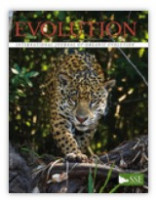“Allometry is vital for understanding the mechanisms underlying phenotypic evolution. Despite a large body of literature on allometry, studies based on fossil time series are limited for solitary organisms and nonexistent for colonial organisms. Allometric relationships have been found to be relatively constant across Recent populations of the same species, separated by space, but variable among fossil populations separated by thousands of years. How stable are allometric relationships at the module level for colonial organisms? We address this question using two extant species of the cheilostome bryozoan Microporella with fossil records spanning the Pleistocene of New Zealand. We investigate size covariation between feeding modules and three traits with separate functions (reproductive, resource uptake, and defense). We found that within-population (static) allometry can change on timescales of at least 0.1 million years. These within-population relationships do not consistently predict overintraspecific evolutionary allometry, which in turn does not predict those estimated at the genus level. Different functional traits are constrained to different extents by module size with defensive traits being the least constrained and most evolvable, compared with reproductive and resource uptake traits. Our study highlights the potential of colonial organisms in understanding the constraints and drivers of long-term phenotypic change.” Published in Evolution

